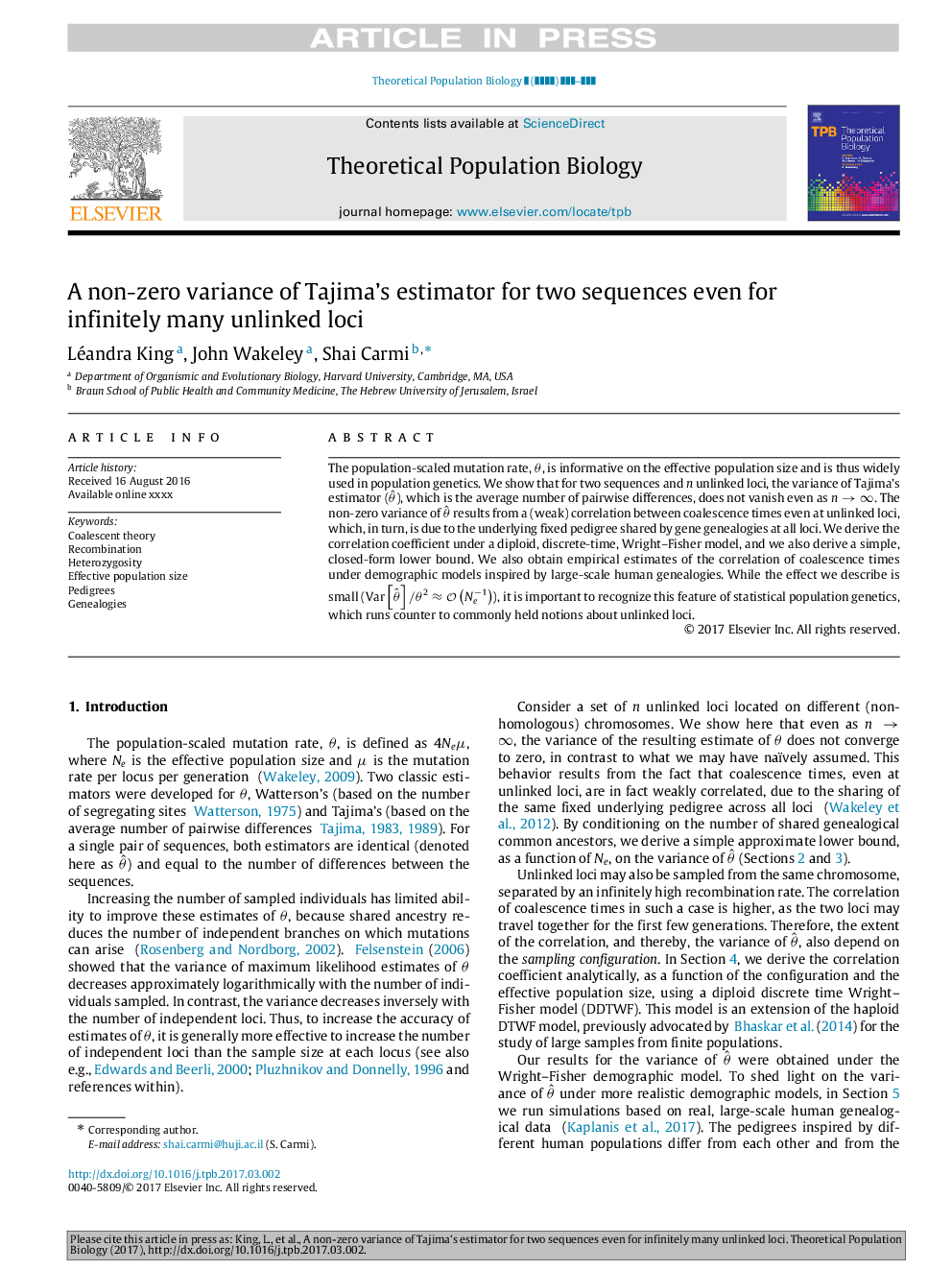| Article ID | Journal | Published Year | Pages | File Type |
|---|---|---|---|---|
| 8877422 | Theoretical Population Biology | 2018 | 8 Pages |
Abstract
The population-scaled mutation rate, θ, is informative on the effective population size and is thus widely used in population genetics. We show that for two sequences and n unlinked loci, the variance of Tajima's estimator (θË), which is the average number of pairwise differences, does not vanish even as nââ. The non-zero variance of Î¸Ë results from a (weak) correlation between coalescence times even at unlinked loci, which, in turn, is due to the underlying fixed pedigree shared by gene genealogies at all loci. We derive the correlation coefficient under a diploid, discrete-time, Wright-Fisher model, and we also derive a simple, closed-form lower bound. We also obtain empirical estimates of the correlation of coalescence times under demographic models inspired by large-scale human genealogies. While the effect we describe is small (VarθËâθ2âONeâ1), it is important to recognize this feature of statistical population genetics, which runs counter to commonly held notions about unlinked loci.
Related Topics
Life Sciences
Agricultural and Biological Sciences
Agricultural and Biological Sciences (General)
Authors
Léandra King, John Wakeley, Shai Carmi,
